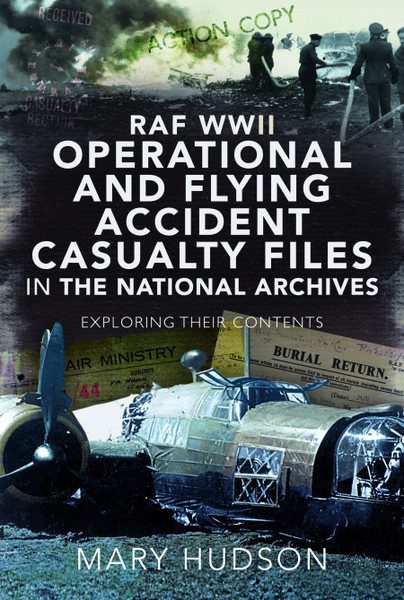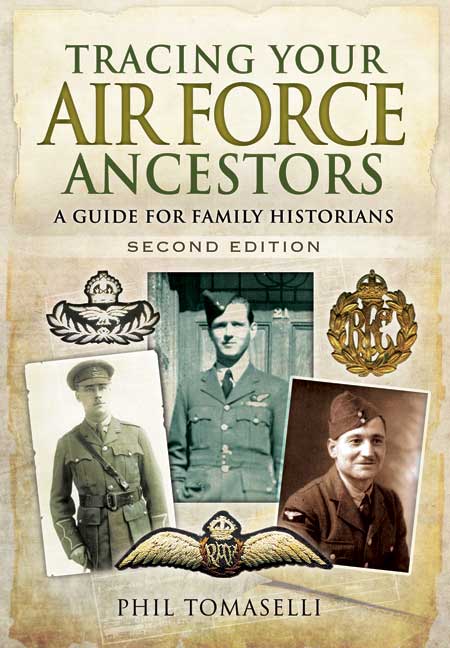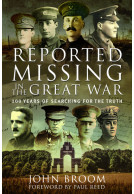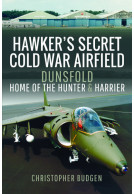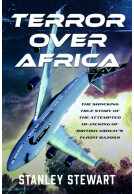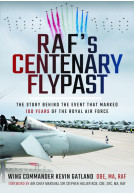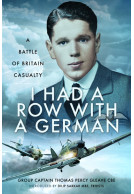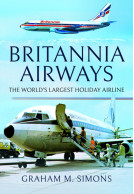RAF WWII Operational and Flying Accident Casualty Files in The National Archives (Hardback)
Exploring their Contents
Imprint: Air World
Pages: 328
Illustrations: 16 colour & 84 black and white illustrations
ISBN: 9781526783523
Published: 29th October 2020
(click here for international delivery rates)
Order within the next 7 hours, 56 minutes to get your order processed the next working day!
Need a currency converter? Check XE.com for live rates
| Other formats available - Buy the Hardback and get the eBook for £1.99! | Price |
|---|---|
| RAF WWII Operational and Flying… ePub (22.7 MB) Add to Basket | £6.99 |
At its height during the Second World War, the RAF totalled 185,000 personnel. Men and women, from home and overseas, served alongside members of Dominion Air Forces, and those members of the air forces of occupied Europe who had escaped to fight on. All are covered in the RAF casualty files. The heaviest losses were suffered by the aircrews; in Bomber Command alone some 75,000 were killed, wounded or captured. All information concerning casualties was carefully compiled at the Air Ministry and now, from these the official records, those covering operational losses (in the air and on the ground), and flying accidents are being made available to the public through The National Archives.
This huge collection of casualty files contains a wealth of contemporary documentation from a variety of sources including captured German records. The fascinating insight into the fate of casualties provided by the Casualty Files includes official documents, examples of which are given, accounts of searches undertaken to establish the fate of the missing, places of burial, copies of information received from the International Red Cross and from sources within enemy occupied lands, as well as letters from family and friends some of which reveal dark secrets of bigamy, adultery, illegitimacy, debt and dishonour.
In this ground-breaking book Mary Hudson has used her expert knowledge to provide an invaluable guide to the understanding of these records for use by researchers and family members alike. She takes the reader on a journey through the files, explaining when and how the RAF Casualty Branch (who opened and maintained the files) was formed, where the information held in the records originated, as well as providing an understanding of the documents themselves and explanation of matters the records refer to.
I found this a fascinating read, with an incredible level of detail and hard work by some very dedicated people.
Military Model Scene
Read the Full Review Here
As featured by
Scramble 1940 - Official Newsletter of the Battle of Britain Historical Society, Autumn/Winter 2021, Issue 164
This interesting book is about people rather than aircraft and does exactly what it says on the title page. The author was prompted to write this book by the release from 2013 of the files mentioned on the title page. The P4 (casualty) files were opened for each casualty notified to the Air Ministry. These may refer to individuals or crews. They can cover flying accidents as well as serious illness including sporting injuries. There are more than 20,000 individual files. The RAF at its peak totaled 185,000 personnel and was fighting a World War on many fronts. There were all the problems of wartime with its lack of clerical staff and shortages of paper etc. so it is remarkable how much was recorded.
Royal Aeronautical Society
The book is broken down into sections with the first section including funerals and burials, both in the UK and the many that took place overseas. The second section covers the many casualties that were missing often with no remains surviving. The third section covers the correspondence between civilians and the Air Ministry. Other section include material relating to general casualty handling, tracing the missing, identification and correspondence with the next of kin. There are further short appendices on other aspects such as the work of the Commonwealth War Graves Commission and even DNA testing.
Casualties in the UK were relatively straightforward but those overseas were more problematical especially those in enemy countries, such as Germany and the Far East, where cooperation was not always forthcoming.
Some of the files can make distressing and harrowing reading both in the official reports and the correspondence from relatives and others. The latter often reveal secrets such as bigamy, adultery, illegitimacy, debt and dishonor.
Considerable work has been done on tracing missing personnel and evidence is still coming to light as a result of excavations and digs in the UK and abroad. This work also touches on other bodies, such as the RAF Museum, who work with The National Archives.
This work contains a large number of illustrations. most of which show examples of forms and other documents used by the Air Ministry. The book is divided into clear chapters but would have benefitted from some sort of index. There is also a short bibliography.
The author of this book served as an RAF officer in the Falklands and Afghanistan as well as gaining an MA in War Studies during this time. She then worked for 14 years with the MOD ‘s Air Historical Branch, often involving RAF casualty enquiries.
There are a large number of individuals engaged in research on RAF personnel, including aerospace and family historians, all of whom would find this a valuable and inexpensive work to consult before contemplate ordering these files at the National Archives.
A very interesting book and covers an aspect of the war that has hardly been touched by other writers or historians. it demonstrates that despite the many different war fronts there was that effort to record the details of the deceased which must have been some comfort for their relatives and loved ones. I found of particular interest the investigation of the deaths of aircrew that had been captured and subsequently murdered by the Gestapo and Hitler youth fanatics and what efforts were made to bring them to justice.
Brian Stafford, North Coates Flying Club
There can be very few as well qualified as the author to explain the processes and procedures for RAF casualty handling, tracing the missing, identifying the dead and the information available in the files to assist the researcher held by The National Archives (TNA). The wife of an RAF pilot Mary Hudson served in the WRAF then RAF and, armed with an MA in War Studies from King’s College, on leaving the RAF she joined the MOD’s Air Historical Branch (AHB) where for fourteen years she was responsible for investigating historic RAF casualty enquiries on behalf of the MOD, the Commonwealth War Graves Commission and others. As such she gained a detailed and intimate knowledge of TNA and other sources of information relating to RAF casualties. The TNA have now made available to the public the vast quantity of official files relating to the RAF’s operational losses, in the air and on the ground which draw information from a variety of RAF, Red Cross and German records. Indeed some files include original family letters of enquiry and background. However, locating, collating and interpreting the various strands of information the files contain can defeat all but the most experienced researcher. Mary Hudson navigates the reader on a journey through the original RAF Casualty Branch files, and all the other available sources of information relating to RAF wartime casualties, and very clearly explains what information each source may be reveal and how to interpret the jargon and abbreviations they contain which for many casual researchers proves completely impenetrable. This fascinating and ground breaking book will be of immense value to experienced and novice researchers alike and of great interest to all with an interest in the process of personnel record keeping which, to this day, seeks to ensure no stone is left unturned to determine the fate of fallen servicemen. Most highly recommended.
Military Historical Society
It is packed with interesting and useful information, and is must for anyone using AIR81 and/or researching RAF casualties more generally. As someone who has also routinely used the Casualty Files for many years at AHB(RAF), I can perhaps say no more than this: I have learned some very useful things from this book.
RAF Historical Society, Journal 76
Mary Hudson has used her expert knowledge to compose a guide for use by researchers and family members of RAF casualties. The books helps to understand when and how these files were created, where the information came from and how to define the information in the records. It is an indispensable guide for people who are researching an RAF casualty file for the first time, but even for the more experienced researchers (I had studied more than 100 files myself before reading the book) the book can be extremely helpful whilst researching an RAF casualty file or to understand the work of the RAF Casualty Branch.
Traces of War
Read the full review here
Review by Graham Pitchfork
Journal of The Orders and Medals Research Society
This is a fascinating book to read and it illustrates the dedication of the teams who handled the difficult issues of death and the missing in a very compassionate and dedicated manner. In addition to its narrative, this book is an excellent guide, which is a valuable help to understanding and researching the files held at The National Archives. For RAF collectors and researchers, it is a must and is very highly recommended.
Website of the Royal Aeronautical Society
Review by Philip Styles
The Shackleton Association
An intriguing work bringing the fruits of many years of inside experience into the hands of those trying to find the missing piece in the jigsaw of a family tree or any RAF historian.
This is a superb book, and it covers exactly what its title says – Operational and Flying casualty records.
Dr Stuart C Blank
This excellent book is a very welcome addition to my personal library and undoubtedly it will help me significantly when researching RAF personnel. I am confident that it should also be on your bookshelf if you are interested in any way regarding RAF flying / operational losses. The author has done a splendid job in writing this guide and her efforts must be highly commended.
RAF WWII Operational and Flying Accident Casualty Files of the National Archive of RAF personnel. The biggest casualties turned out to be from Bomber Command who had over 75,000 killed, wounded or captured. These files contain a huge wealth of information from various resources to do with casualty numbers including places such as the Red Cross, letters from family, friends and even German records. The expert Mary Hudson is the ideal person to do this books as she has the background in both the RAF and the WRAF to help take people through the records which she has done for 14 years. This book looks at the creation of the Casualty branch, how to use it for non-members and various bits of interest that have been discovered.
UK Historian
I must admit that I love this type of book as your basically creating a book from numbers and information that need finding from mainly first hand sources of information. Quite often you come across gems of information that are just sat there waiting to be discovered. This is a fascinating book that walks you through the progress of how the RAF go about collecting and collating the information when trying to report about personnel and casualties. All the processes are great to read about, and the files, notes, appendices are all laid out in the book towards the back. Another great book about using primary sources. Although this might be a niche subject to most, it’s a very interesting read.
5 stars
Read the full review here
Mary Hudson's connection to the RAF goes back 50 years, and this labour of love will be an important addition to many a bookshelf, particularly as we build up the countdown to the 100th anniversary of the start of the second world war.
Paul Nixon
Read the full review here
Mary Hudson could hardly have a better background for explaining this important resource for researchers of RAF history... Having written this review, I am putting Mary Hudson’s book in an easily accessible position in my collection.
British Modern Military History Society, review by Geoff Simpson
Click here to read the full review
About Mary Hudson
Brought up in Cambridge, MARY HUDSON’s connection with the RAF began in 1970 when she married an RAF pilot. After attending university as a mature student she joined the WRAF in 1983 and in so doing became the first married WRAF officer with children. In 1994, when the WRAF merged fully with the RAF, she was 'rebranded' as an RAF officer. Whilst with the RAF Mary gained an MA in War Studies from King’s College, London. On leaving the RAF, Mary spent 14 years as specialist civil servant with the MOD’s Air Historical Branch. She was deeply involved with historic RAF casualty enquiries.
About Sebastian Cox
Sebastian Cox, OBE, BA, MA, FRHistS, Head of the MoD Air Historical Branch
Tracing Your Air Force Ancestors Second Edition (Paperback)
In this fully revised second edition of his best-selling Tracing Your Air Force Ancestors Phil Tomaselli explains which records survive, where they can be found and how they can help you in your research. Whether you are interested in the career of an individual air-man or woman, researching medals awarded to a pilot or crew member or just want to know more about a particular squadron or operation, this handbook will point you in the right direction. Each era in air force history is described, from the pioneering days of early aviation and the formation of the Royal Flying Corps in the First World…
By Phil TomaselliClick here to buy both titles for £39.99







